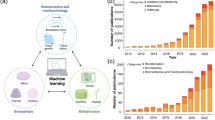Abstract
Porous titanium foam is now a standard material for various dental and orthopedic applications due to its light weight, high strength, and full biocompatibility properties. In practical biomedical applications, outer surface geometry and porosity topology significantly influence the adherence between implant and neighboring bone. New microfabrication technologies, such as micromilling and laser micromachining opened new technological possibilities for shape generation of this class of products. Besides typical geometric alterations, these manufacturing techniques enable a better control of the surface roughness that in turn affects to a large extent the friction between implant and surrounding bone tissue. This paper proposes an image analysis approach for optical investigation of the porosity that is tailored to the specifics of micromilling process, with emphasis on cutting force monitoring. According to this method, the area of porous material removed during micromilling operation is estimated from optical images of the micromachined surface, and then the percentage of solid material cut is calculated for each tool revolution. The employment of the aforementioned methodology in micromilling of the porous titanium foams revealed reasonable statistical correlations between porosity and cutting forces, especially when they were characterized by low-frequency variations. The developed procedure unlocks new opportunities in optimization of the implant surface micro-geometry, to be characterized by an increased roughness with minimal porosity closures in an attempt to maximize implant fixation through an appropriate level of bone ingrowth.
Similar content being viewed by others
References
Banhart J, Weaire D (2002) On the road again: metal foams find favor. Phys Today 55:37–42
Ryan G, Pandit A, Apatsidis DP (2006) Fabrication methods of porous metals for use in orthopaedic applications. Biomaterials 27:2651–2670
Baril E, Lefebvre L-P, Thomas Y, Ilinca F (2008) Foam-coated mim gives new edge to titanium implants. Met Powder Rep 63:46–50
Smith GT (1998) Getting the measure of pm machinability. Met Powder Rep 53:31–35
Eisenmann M (2000) Porous P/M technology, ASM handbook, vol 7. ASM International, New York
Alizadeh E (2008) Factors influencing the machinability of sintered steels. Powder Metall Met Ceram 47:304–315
Bordatchev E, Nikumb S (2008) Fabrication of moulds and dies using precision laser micromachining and micromilling technologies. J LMN 3:175–181
Banhart J (2001) Manufacture, characterisation and application of cellular metals and metal foams. Prog Mater Sci 46:559–U553
Medraj M, Baril E, Loya V, Lefebvre LP (2007) The effect of microstructure on the permeability of metallic foams. J Mater Sci 42:4372–4383
Baril E, Mostafid A, Lefebvre LP, Medraj M (2008) Experimental demonstration of entrance/exit effects on the permeability measurements of porous materials. Adv Eng Mater 10:889–894
Lefebvre LP, Banhart J, Dunand DC (2008) Porous metals and metallic foams: current status and recent developments. Adv Eng Mater 10:775–787
Thelen S, Barthelat F, Brinson LC (2004) Mechanics considerations for microporous titanium as an orthopedic implant material. J Biomed Mater Res A 69A:601–610
Zhang YH, Zhang YC, Tang HQ, Wang LH (2010) Images acquisition of a high-speed boring cutter for tool condition monitoring purposes. Int J Adv Manuf Technol 48:455–460
Kerr D, Pengilley J, Garwood R (2006) Assessment and visualisation of machine tool wear using computer vision. Int J Adv Manuf Technol 28:781–791
Wang W, Wong YS, Hong GS (2005) Flank wear measurement by successive image analysis. Comput Ind 56:816–830
Wang WH, Hong GS, Wong YS (2006) Flank wear measurement by a threshold independent method with sub-pixel accuracy. Int J Mach Tools Manufact 46:199–207
Atli AV, Urhan O, Erturk S, Sonmez M (2006) A computer vision-based fast approach to drilling tool condition monitoring. Proc IME B J Eng Manufact 220:1409–1415
Malcolm AA, Leong HY, Spowage AC, Shacklock AP (2007) Image segmentation and analysis for porosity measurement. J Mater Process Technol 192:391–396
Prokop J, Sveda L, Jancarek A, Pina L (2009) Porosity measurement method by X-ray computed tomography. Fractography of Advanced Ceramics Iii 409:402–405
Tutunea-Fatan OR, Abolghasemi Fakhri M, Bordatchev EV (2010) Porosity and cutting forces: from macroscale to microscale machining correlations. Proc IME B J Eng Manufact 225:619–630
Lefebvre LP, Thomas Y (2003) Method of making open cell material, United States Patent No. 6660224
Otsu N (1979) A threshold selection method from gray-level histograms. IEEE Trans Syst Man Cybern 9:62–66
Bendat JS, Piersol AG (1993) Engineering applications of correlation and spectral analysis. Wiley, New York
Abolghasemi Fakhri M., Bordatchev EV, Tutunea-Fatan, OR (2011) Evaluation of the relative effect of process parameters on porosity-cutting force correlation in micromilling of porous titanium, under revision for Machining Science and Technology.
Acknowledgments
This paper is the result of collaboration between The University of Western Ontario and NRC-IMI-CAMM. The authors thank Louis-Philippe Lefebvre, Maxime Gauthier, Eric Baril, and Sylvain Pelletier, from NRC-IMI, and Hugo Reshef, Mike Meinert, and Suwas Nikumb from NRC-IMI-CAMM for their continued technical and partial financial support in this work. The financial support was also provided in part by Natural Sciences and Engineering Research Council of Canada.
Author information
Authors and Affiliations
Corresponding author
Rights and permissions
About this article
Cite this article
Abolghasemi Fakhri, M., Bordatchev, E.V. & Tutunea-Fatan, O.R. An image-based methodology to establish correlations between porosity and cutting force in micromilling of porous titanium foams. Int J Adv Manuf Technol 60, 841–851 (2012). https://doi.org/10.1007/s00170-011-3647-1
Received:
Accepted:
Published:
Issue Date:
DOI: https://doi.org/10.1007/s00170-011-3647-1




